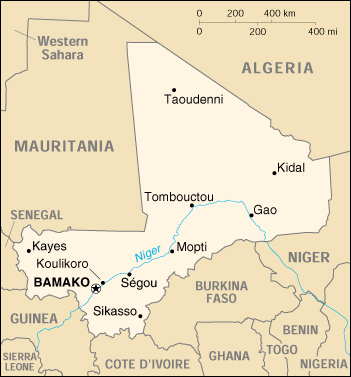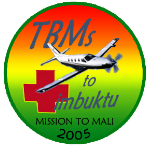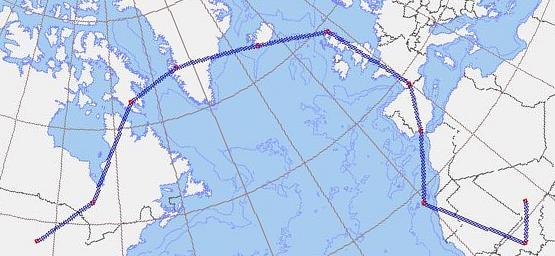| Mali is located 17° north of the equator, and 4° west of the Prime Meridian (Greenwich). The total area of Mali is 1.24 million sq. km., slightly less than twice the size of Texas. Mali is landlocked. The climate is subtropical to arid, hot and dry February to June, rainy, humid and mild June to November, cool and dry November to February. The terrain is mostly flat to rolling northern plains covered by sand (Sahara Desert), savanna in south, rugged hills in northeast. 4% of the land is arable, .04% is in permanent crops and 1,380 sq km is irrigated. Cotton, millet, rice, corn, vegetables, peanuts, cattle, sheep and goats are the primary agriculture products. Mali natural resources of gold, phosphates, kaolin, salt, limestone, uranium, and hydropower are limited. Mali exports cotton, groundnuts, rice, and livestock. Mali is very dependent on the importation of petroleum, machinery and equipment, construction materials, foodstuffs, and textiles. The environment faces the impact of deforestation, soil erosion, inadequate supplies of potable water and poaching. |
 |







